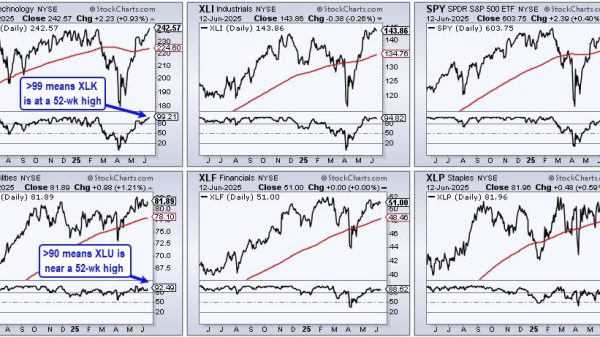What Does Pegging Mean in Crypto?
There are many questions about crypto-related topics. For instance, people want to know, “what does pegging mean in crypto?” “whats pegging” or “pegging definition meaning.”
In the context of cryptocurrency, “pegging” refers to a mechanism used to stabilize the value of a cryptocurrency by linking it to another asset, typically a fiat currency like the US dollar or a commodity like gold.
How pegged cryptocurrencies hold their value
The purpose of pegging is to reduce the price volatility of a cryptocurrency and provide stability for users and investors.
There are different types of pegging mechanisms employed in the crypto space. Let’s explore a few common ones:
Fiat-collateralized stablecoins: This type of pegging involves backing a cryptocurrency with reserves of a fiat currency. For example, a stablecoin may be pegged to the US dollar, meaning that for every unit of that stablecoin in circulation, there is a corresponding amount of US dollars held in reserve. The reserves provide stability and can be audited to ensure the peg is maintained.
Crypto-collateralized stablecoins: In this mechanism, a stablecoin is backed by other cryptocurrencies instead of fiat currency. The value of the stablecoin is maintained by holding a reserve of other cryptocurrencies, which can be sold if needed to stabilize the price. Smart contracts are often used to manage the collateral and maintain the peg.
Algorithmic stablecoins: This type of pegging relies on algorithmic mechanisms to maintain price stability. Instead of collateral, these stablecoins use algorithms to control the supply and demand dynamics of the cryptocurrency. For example, if the price of the stablecoin is below the target peg, the algorithm may increase the supply to push the price back up.
Commodity-collateralized stablecoins: Some stablecoins are pegged to the value of a physical asset or commodity, such as gold or oil. These stablecoins maintain a reserve of the underlying commodity to ensure price stability. Audits and transparency are crucial in this type of pegging to verify the value of the reserves.
Advantages and disadvantages of pegging
Pegging can offer several advantages to users and the broader crypto ecosystem. Here are a few key benefits:
Stability: By pegging a cryptocurrency to a stable asset, pegged cryptocurrencies aim to minimize price volatility. This stability can make them more suitable for everyday transactions and reduce the risk associated with cryptocurrency holdings.
Accessibility: Pegged cryptocurrencies can provide an on-ramp for individuals and businesses that are more familiar with traditional fiat currencies. By maintaining a stable value, they can help bridge the gap between the traditional financial system and the world of cryptocurrencies.
Hedging: Pegged cryptocurrencies can serve as a hedge against the volatility of other cryptocurrencies. Traders and investors can move their funds into pegged cryptocurrencies during times of market turbulence to protect their value.
Cross-border transactions: Stablecoins pegged to fiat currencies can facilitate fast and low-cost cross-border transactions. They can eliminate the need for traditional banking intermediaries, making remittances and international transfers more efficient.
However, pegging also poses some challenges and risks. Maintaining a peg requires trust in the stability and transparency of the underlying reserves.
In the case of fiat-collateralized stablecoins, regulatory scrutiny and potential issues with banking partnerships can impact the stability of the peg. Additionally, algorithmic stablecoins are subject to potential vulnerabilities in the algorithm’s design.
What is a stablecoin?
Of course, it is important to know “what does pegging mean in crypto?” However, it is also important to learn more stablecoin.
A stablecoin is a type of cryptocurrency designed to maintain a stable value relative to a specific asset or a basket of assets. Unlike most cryptocurrencies, which can be highly volatile in terms of price, stablecoins aim to minimize price fluctuations, providing stability and acting as a reliable store of value.
Stablecoins offer several advantages and use cases within the cryptocurrency ecosystem:
Medium of Exchange: The stability of stablecoins makes them suitable for everyday transactions, similar to traditional fiat currencies. Merchants and consumers can transact using stablecoins without worrying about significant price fluctuations.
Store of Value: Stablecoins provide a way to store value in the crypto space without being exposed to the volatility of other cryptocurrencies. Users can hold stablecoins as a stable and secure form of digital currency.
Remittances and cross-border transactions: Stablecoins enable fast and low-cost cross-border transactions. They eliminate the need for intermediaries and can provide a more efficient alternative to traditional remittance systems.
However, it’s important to note that stablecoins are not without risks. They depend on the stability and transparency of their underlying mechanisms and collateral reserves. Regulatory challenges, liquidity concerns, and trust in the stablecoin issuer can also impact their stability.
Examples of popular stablecoins include Tether (USDT), USD Coin (USDC), Dai (DAI), and TrueUSD (TUSD), among others. Each stablecoin has its own specific features, mechanisms, and governance structures.
Overall, pegging in crypto offers stability and utility, but it’s important to understand the specific mechanisms and risks associated with each type of pegged cryptocurrency. As with any investment or financial decision, it’s crucial to conduct thorough research and exercise caution when engaging with pegged cryptocurrencies.
The post What does pegging mean in crypto? appeared first on FinanceBrokerage.

























